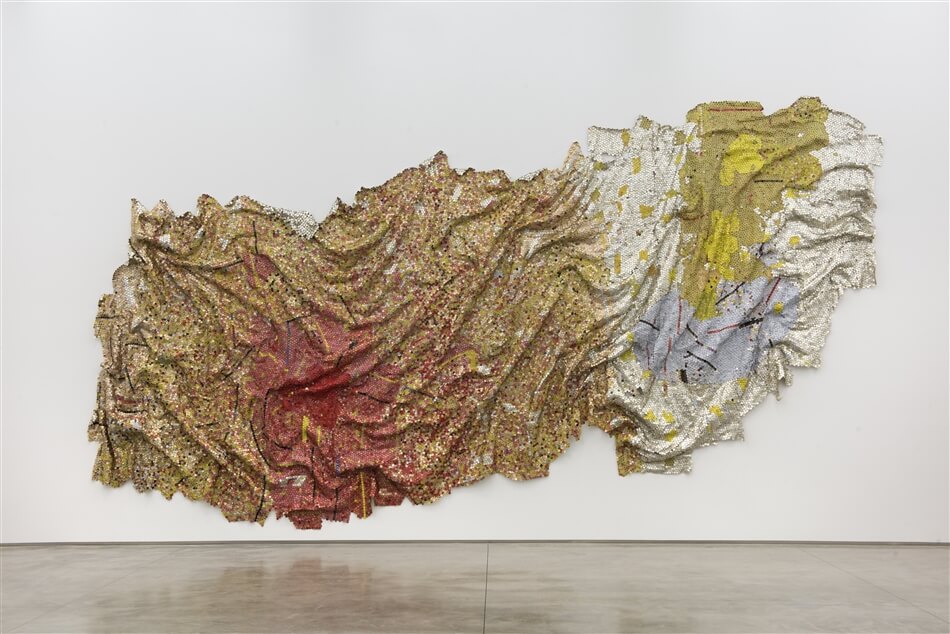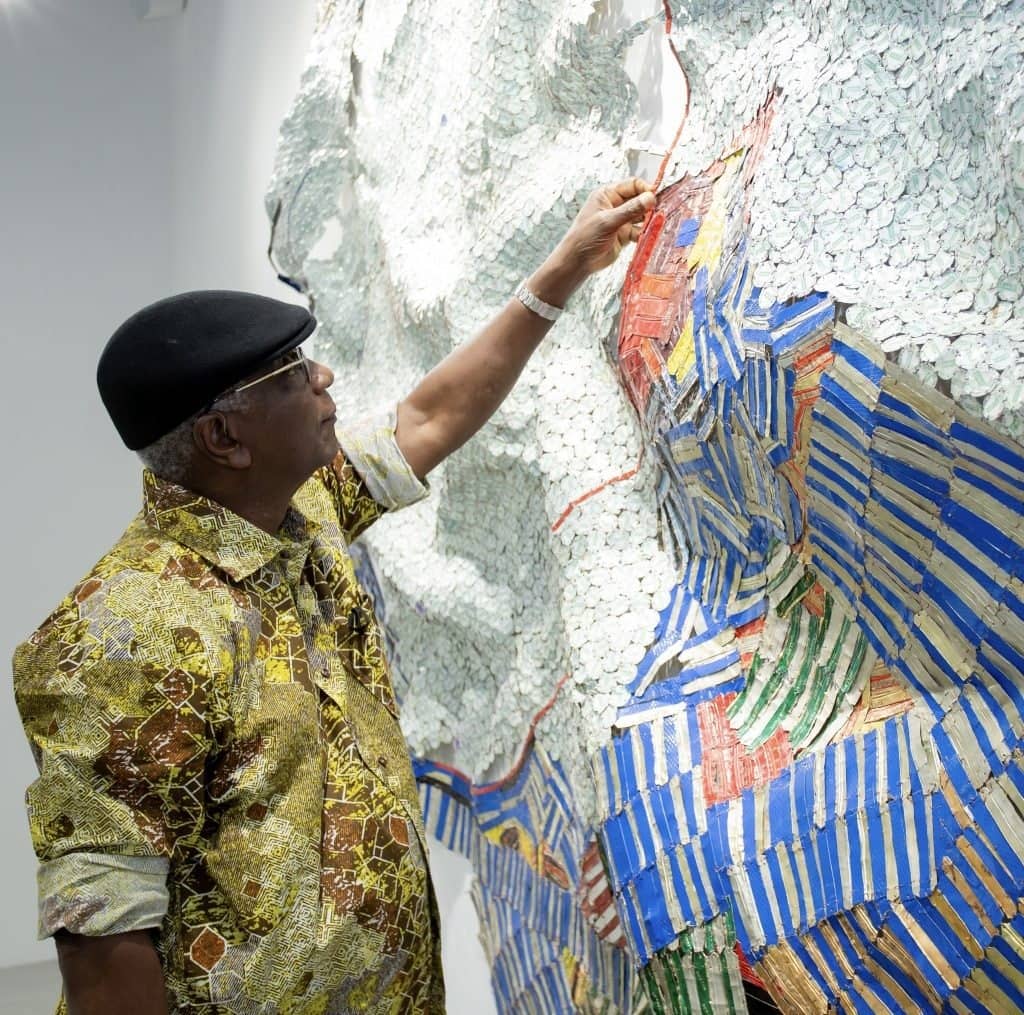In a career spanning over five decades, Ghanaian-born sculptor El Anatsui has transformed what many would consider waste into breathtaking works of global significance.
His monumental installations, often composed of thousands of discarded liquor bottle caps, aluminum packaging, and copper wire, shimmer like royal tapestries, commanding attention in museums and galleries around the world.
One of his masterpieces titled “El Anatsui: Triumphant Scale” exhibited at the 2024 Edinburgh Art Festival, is a celebration of his great talent.

Life Rooted in Heritage and Reinvention
Born in 1944 in the coastal town of Anyako, Ghana, Anatsui grew up surrounded by the intricate designs of Ewe culture. His father, a master Kente cloth weaver, may have unwittingly planted the seeds for El’s later fascination with textile-like forms.
He studied sculpture at the Kwame Nkrumah University of Science and Technology in Kumasi before moving to Nigeria in 1975 to teach at the University of Nigeria, Nsukka. There, he spent more than 40 years shaping not only art but also the minds of generations of African artists.
Yet, it wasn’t until the late 1990s that Anatsui began working with the discarded bottle caps that would define his signature style. Weaving them together with fine copper wire, he created sprawling, undulating sheets of metallic “cloth” that blurred the lines between sculpture, painting, and textile.

Art That Speaks Across Borders
While his work is unmistakably rooted in African tradition, evoking the textures of Kente cloth or the symbolism of royal regalia it is also deeply global.
Anatsui’s pieces reflect the entangled histories of trade, colonialism, and environmental degradation. By repurposing materials associated with consumer waste, he raises questions about value, transformation, and the afterlife of objects.
“Art grows out of each particular situation,” Anatsui once said, “and I believe that artists are better off working with whatever their environment throws up.”
This philosophy has propelled him to international fame. His works have appeared in the Venice Biennale, New York’s Metropolitan Museum of Art, and the British Museum. In 2023, TIME magazine named him one of the 100 most influential people in the world.


